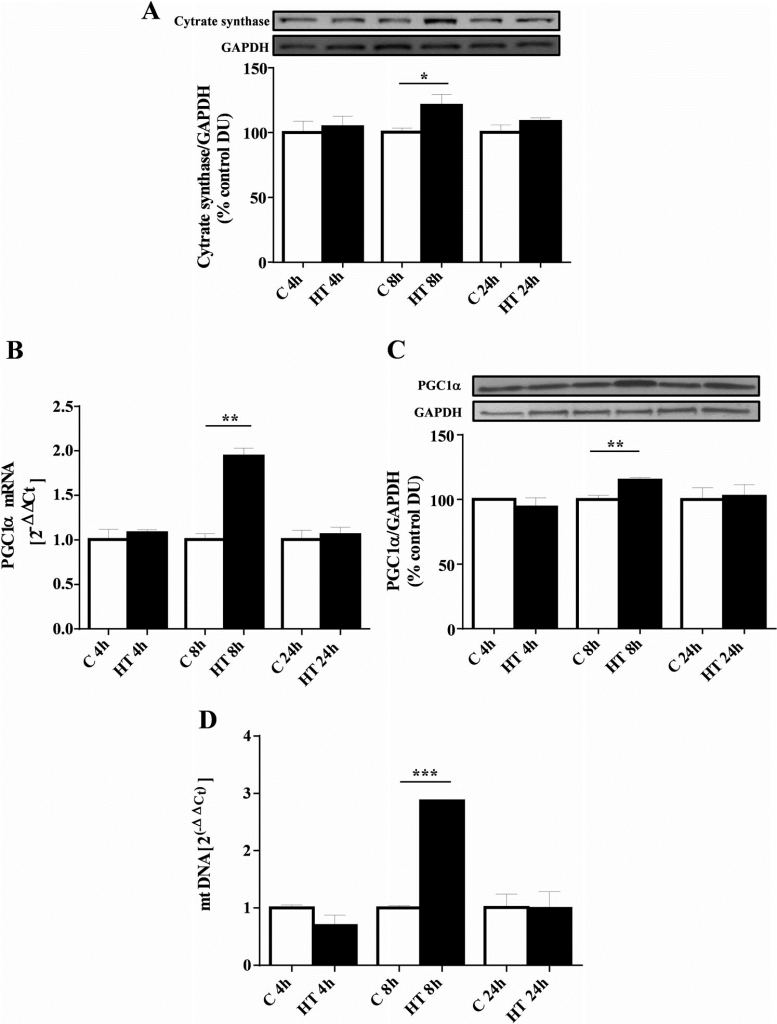By Emma Burgos-Ramos
Mitochondrial energetic deficit is one of the hallmarks of neurodegenerative disorders, e.g. Alzheimer´s disease (AD). AD is one the main aging-related diseases whose prevalence increases from 65 years of age: approximately 46.8 million people worldwide are affected by AD and this figure will triple by 2050 [1]. Therefore, it is indispensable to elucidate the physiopathology of AD to design new strategies to prevent, mitigate, and/or delay AD development. AD is characterized by an irreversible memory loss, partly triggered by the formation of extracellular senile plaques, accumulations of amyloid β peptide (Aβ), and intracellular neurofibrillary tangles of hyperphophorylated tau protein, which negatively affect synaptogenesis [2]. This dynamic neurobiological process is dependent on high levels of energy, provided by mitochondria. Specifically, the most amount of cellular adenosine triphosphate (ATP) derives from the mitochondrial electron transport chain.
Adherence to a Mediterranean diet is associated with lower incidence of cognitive decline and AD and extra virgin olive oil’s (poly)phenols such as oleuropein and hydroxytyrosol (HT) are being actively studied in this respect. HT restores the impaired insulin signaling pathway in a cell model of AD [3] and prevents cognitive decline in a mouse model of Aβ-deposition [4].
Emma Burgos-Ramos and collaborators assessed the effects of HT on a well-characterized mitochondrial dysfunction in a cellular model of AD. They reported an increases of the formation of new mitochondria post HT-treatment (figure 1), which was followed by higher mitochondrial fusion (figure 2).


Further, ATP concentrations were significantly increased after treatment with HT as compared with controls (Table 1).

Likewise, HT increased different markers of mitochondrial activity, such as ATP synthase and Aralar, proteins involved to obtain energy.
In conclusion, this study suggests that HT may revert the energetic deficit of a cellular model of AD by potentiating mitochondrial activity. Because HT is being proposed as dietary supplement or component of functional foods, future studies in appropriate animal models and – eventually – humans are warranted to further investigate its potential neuroprotective actions in AD.

Emma Burgos-Ramos, PhD. Associate Professor from Castilla-La Mancha University (UCLM) exerts her teaching vocation and investigation at the faculty of Enviromental Sciences and Biochemistry from 2015. She initiated her researching career publishing 6 papers, all of them about Alzheimer´s disease, in prestigious international journals of neuroendocrinology. During her postdoctoral formation she was granted with a prestigious contract from Instituto Carlos III of Spain, which allowed her to publish 17 papers in international journals of high impact factor about the pathogenesis of obesity and type 2 diabetes in central nervous system and enjoy of two stays at the Universidad Clínica de Navarra and in Ohio University, where she carried out microarray profiles and proteomic analysis, respectively. She has also written several book chapters related to metabolic syndrome and neurodegenerative diseases. In 2014, she joined to IMDEA Food Institute as a junior researcher where she started to study the effects of hydroxytyrosol on Alzheimer´s disease and cognitive decline. Since then, Emma´s main area of research is focused on study the effects of different nutraceuticals from Mediterranean diet on neurodegenerative disease. This research line has generated 10 great articles up to now.
References
- Guzman-Martinez L, Maccioni RB, Farias GA, Fuentes P, Navarrete LP. Biomarkers for Alzheimer’s Disease. Curr Alzheimer Res. 2019;16(6):518–528.
- Skaper SD, Facci L, Zusso M, Giusti P. Synaptic Plasticity, Dementia and Alzheimer Disease. CNS Neurol Disord Drug Targets. 2017;16(3):220–233.
- Crespo MC, Tome-Carneiro J, Pintado C, Davalos A, Visioli F, Burgos-Ramos E. Hydroxytyrosol restores proper insulin signaling in an astrocytic model of Alzheimer’s disease. Biofactors. 2017;43(4):540–548.
- Nardiello P, Pantano D, Lapucci A, Stefani M, Casamenti F. Diet supplementation with hydroxytyrosol ameliorates brain pathology and restores cognitive functions in a mouse model of amyloid-beta deposition. J Alzheimers Dis. 2018;63(3):1161–1172.


[…] Read all in Science & Wine blog: https://www.ciencia-e-vinho.com/2020/11/11/hydroxytyrosol-improves-the-mitochondrial-energetic-defic… […]